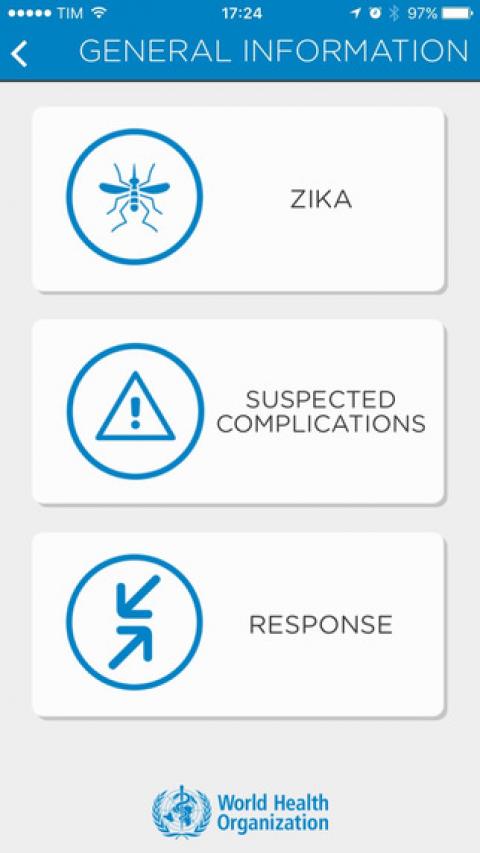WHO launched an app against Zika

During the Ebola outbreak in West Africa, the CDC (Centers for Disease Control and Prevention) developed an application that allowed people to share information on the spread of the contagion, which proved to be very useful to monitor the situation. Now that the Zika virus outbreak is raising concerns, would it be possible to use a similar approach? Some weeks ago, the experts of the CDC argued that developing an app to track the spread of Zika virus would not be as effective as it was with Ebola. The main difference being the modality of virus transmission: Ebola infection is conveyed through human contact, while Zika virus is mainly spread through mosquito bites. Therefore, in the case of Zika, tracking the vector of the infection and monitoring the epidemiological situation is harder.
Nevertheless, this does not mean that using a tool like an app is not useful to spread information, especially for health care providers. Some days ago, the World Health Organization (WHO) launched an app for both iOS and Android that contains all the information about Zika virus and its suspected complications. The app is especially designed for health care workers, it provides technical guidance complied by WHO experts and is focused on prevention and diagnosis, through a surveillance training and a facilitator's guide. Moreover, the WHO experts put a specific focus also on the management of risk situations, for instance on issues regarding pregnancy (i.e. the breastfeeding issue) and on the identification of Guillain-Barré Syndrome (GBS) and microcephaly in the context of Zika virus. The app includes the technical guidance on how to maintain a safe and adequate blood supply during Zika virus outbreaks, how to communicate the risk in this context and shows many case-studies to be considered as examples. It also contains a list of Q&A.
The app is made up of three blocks: first, a part dedicated to general information, that could be useful for the general public too; a second part that includes the latest news that come from the WHO official channels to spread only validated information; a thirds wider part dedicated to the health care workers, which contains a list of approved documents and guidelines to manage healthcare services during risk situations. Despite its wealth of information, the expert themselves specified that this app is a tool “under construction”, especially the parts concerning the two main potential consequences of Zika: microcephaly and the Guillain-Barré Syndrome. The cause of the disease cannot always be determined, and researchers are studying a potential but still unproven link between the surge in these diseases and Zika virus infection. However, “potential” does not mean “certain”. For this reason, the WHO experts suggest to keep the app updated. The knowledge about Zika diffusion and its consequences continues to evolve week after week.
Cristina Da Rold
Science writer
